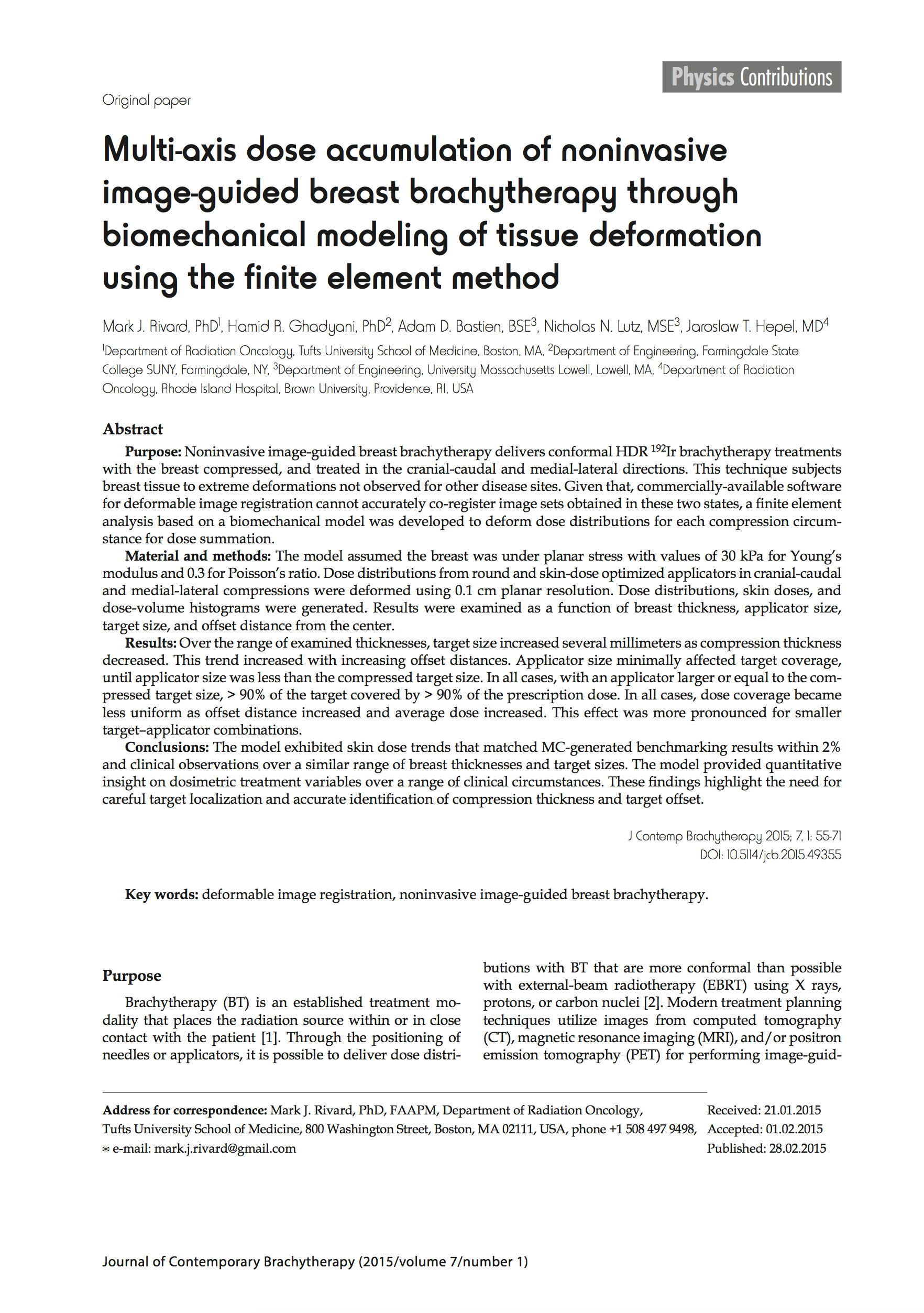Multi-axis dose accumulation of noninvasive image-guided breast brachytherapy through biomechanical modeling of tissue deformation using the finite element method
Mark J. Rivard, PhD1, Hamid R. Ghadyani, PhD2, Adam D. Bastien, BSE3, Nicholas N. Lutz, MSE3, Jaroslaw T. Hepel, MD4
1Department of Radiation Oncology, Tufts University School of Medicine, Boston, MA, 2Department of Engineering, Farmingdale State College SUNY, Farmingdale, NY, 3Department of Engineering, University Massachusetts Lowell, Lowell, MA, 4Department of Radiation Oncology, Rhode Island Hospital, Brown University, Providence, RI, USA
Abstract
Purpose: Noninvasive image-guided breast brachytherapy delivers conformal HDR 192Ir brachytherapy treatments with the breast compressed, and treated in the cranial-caudal and medial-lateral directions. This technique subjects breast tissue to extreme deformations not observed for other disease sites. Given that, commercially-available software for deformable image registration cannot accurately co-register image sets obtained in these two states, a nite element analysis based on a biomechanical model was developed to deform dose distributions for each compression circumstance for dose summation.
